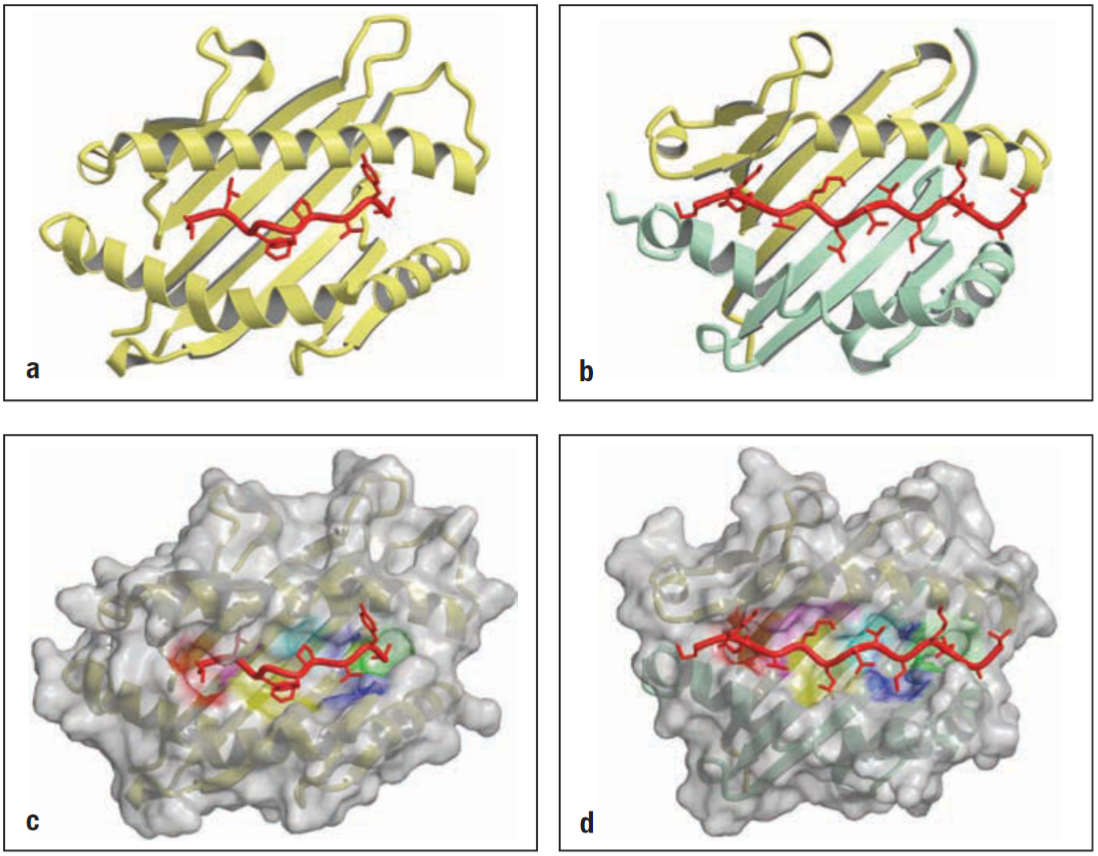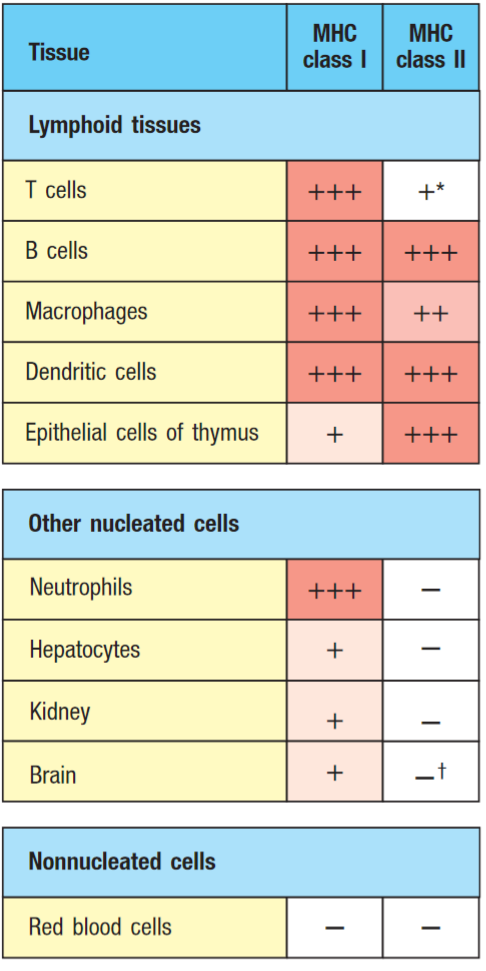major histocompatibility complex
Transmembrane glycoproteins, that presents peptide fragments bound in the peptide-binding cleft to CD8+ and CD4+ t-cells. MHC molecules have a cleft in the extracellular face which peptides bind to. MHC molecules are highly polymorphic within the population.
As the TCRs interact with the alpha helices that make up the peptide-binding cleft, this is the location of most polymorphism in the MHC molecules.
Note
Peptides that can bind to a given MHC allotype have the same or very similar amino acid residues at two or three particular positions along the peptide sequence (anchor residues).
Binding also depends on the nature of amino acids at other positions in the peptides, in some cases certain AAs are preferred in certain positions, whereas in others the presence of particular amino acids prevents binding. These additional amino acid positions are called ‘secondary anchors’.
Classes of MHC
There are two classes of MHC molecules class I and class II and they differ in both their structure and their expression pattern in the tissues of the body.

MHC molecules can bind stably to many different peptides.
Note
The bound peptide is an integral part of the MHC molecule’s structure, and MHC molecules are unstable when peptides are not bound. Stable peptide binding is important, peptides are bound before transportation to the surface so they are from the cell. If the peptide could easily exchange at the cell surface it would prevent pMHC complexes from being reliable indicators of infection or of uptake of a specific antigen.
Class I and Class II molecules are expressed differentially on cells
MHC class I molecules present peptides from pathogens, commonly viruses, to CD8+ t-cells, which are specialized to kill any cell that they specifically recognise. Nearly all nucleated cells express MHC class I due to vulnerability to infection from viruses.
MHC class II molecules are found on APCs (such as DCs, macrophages, and b-cells). Can activate CD4+ t-cells.
Fact
When a previously activated CD4+ t-cell recognises peptides bound to MHC class II molecules on b-cells, the t-cell will secrete cytokines that can influence the isotype of the antibody that those B cells will choose to produce.
The expression of both Class I and II molecules is regulated by cytokines, in particular, interferons, released in the course of an immune response. IFN-α and IFN-β increase the expression of MHC class I molecules on all types of cells, whereas IFN-γ increases expression of both class I and class II on certain cell types that do not normally express them. interferons also enhance the antigen-presenting functions of MHC class I molecules by inducing the expression of key components of the intracellular pathway that enables MHC loading.
The level of expression can vary depending on different cell types (e.g. MHC class I expression on immune cells is very high in comparison to hepatocytes).
